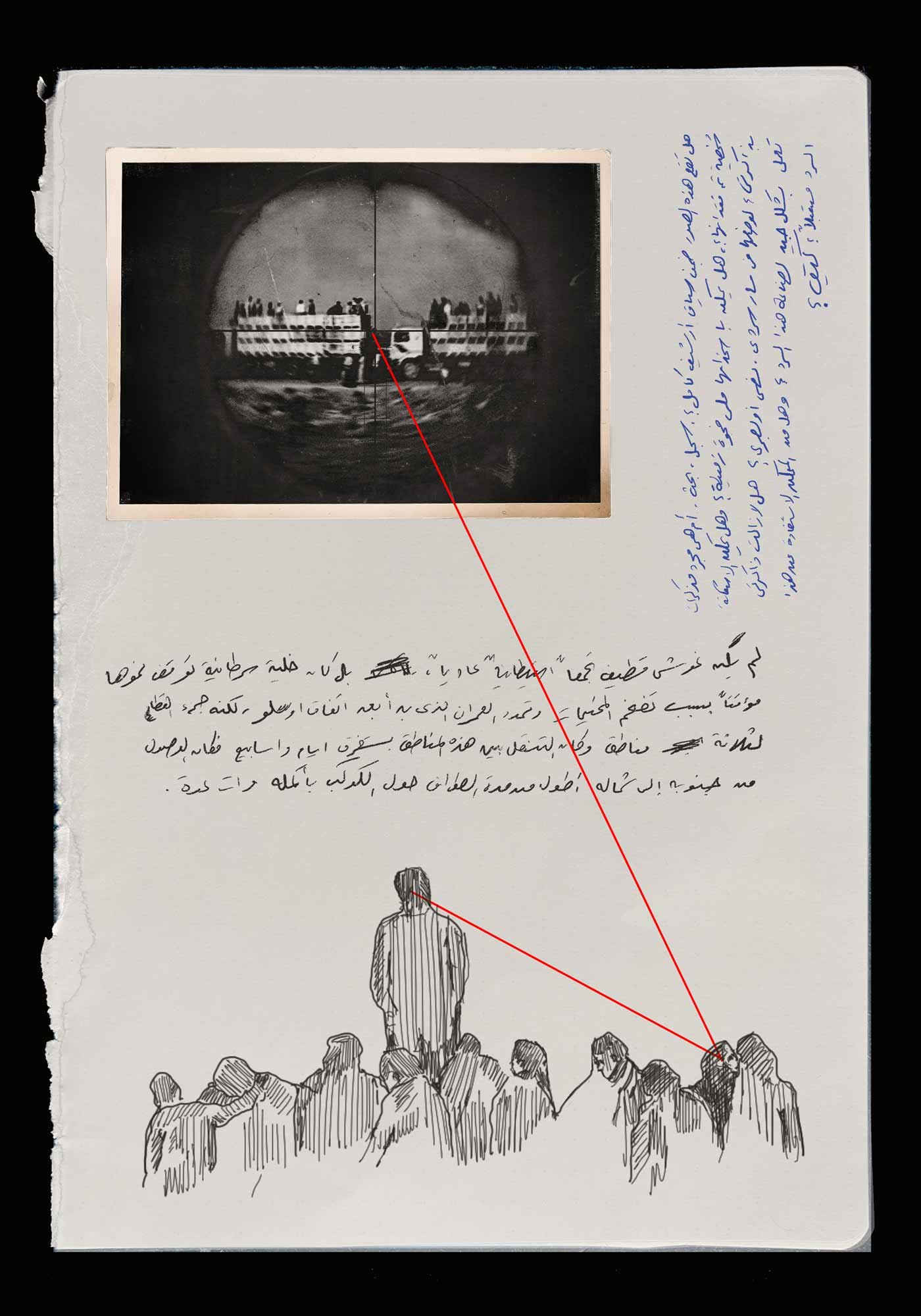Control Anatomy No. 7
Control Anatomy No. 7
Study | Digital photography
30 x 21 cm | 11 3/4 x 8 1/4 in
"Gush Katif (previous Israeli settlement in Gaza) was not a normal settlement complex, but it was a cancer cell that temporarily paused its growth because of the refugee camps’ expansion that followed the Oslo Accords, but it split the (Gaza) Strip into into three areas and the commute between these areas took days and weeks so that getting from its south to its north took more time than circling around the entire earth multiple times.
Do these photos fall within the contexts of a full archive? A search record. Or are they only personal memoirs that have been lost? Is it possible to use them to fill a gap in time? And is it possible to rely on my memory? To put it on a narrative path. Psychological or visual? Is my memory still working properly to produce this narrative? And is it possible to benefit from this narrative in the future? How?"
In this exhibition, Mahmoud Alhaj examines the colonial violence and mechanisms of domination and control imposed on Palestinian geography over the years. Alhaj’s projects preceded the intensification of these oppressive tools, ultimately leading to the ongoing genocide and atrocities in the Gaza Strip over the past months. Alhaj views the technology of violence production as the culmination of an ongoing workshop organized by the colonizer behind the scenes to invent the most violent methods to subjugate Palestinians.
The exhibition features a collection of projects completed by Alhaj in recent years, including Violence 24/7, Fragile, and 402 of Gray. These works rely on images that aim “to keep pace with the crazy flow of violent events” around the artist. Alhaj selects “images that have lost their luster in the eyes of viewers and faded into the back doors of internet search engines,” and images that have had repercussions on himself and those around him. He reintroduces these images within a contemporary artistic narrative.
Alhaj layers photographs taken over the years and compares them to uncover changes over time, akin to an investigative detective on a highly meticulous mission. He gathers the traces left by colonial strategies, including the distortion of landscape and the delineation of control and domination. He finds evidence in various places such as the wall, sewage dumps, military barracks, watchtowers, streets, roundabouts, and borders…
In Violence 24/7, Alhaj resorted to dismantling and reconstructing specific parts of the violence archive of the military governor, spanning from 1987 to 2023. He subjects these images and materials to an intense digital treatment process.
The strength of Alhaj’s projects lies in his foresight in studying violence technology, an issue of increasing importance in the Palestinian context as the genocide in Gaza intensifies using these technologies. Additionally, his work stands out due to his meticulous attention to detail and his ability to transcend the limitations of digital techniques, resisting their easy allure. Instead, he takes a more deliberate approach, manipulating digital technology to serve his vision and ideas.
Words by Rana Anani


